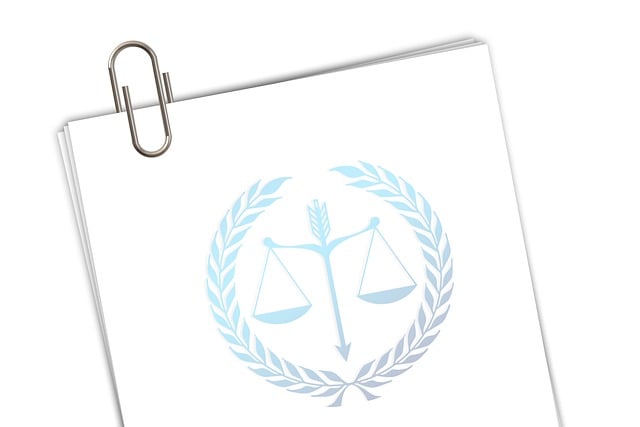Mail and wire fraud, facilitated by advanced scams like phishing and impersonation, target consumers through inheritance fraud, romantic scams, and fake investments. Examples of Successful Consumer Protection Lawsuits have proven effective in recovering losses and raising awareness about these evolving threats. These lawsuits not only provide financial compensation to victims but also lead to improved data security, stricter regulations, and collective efforts from legal professionals, communities, and regulatory bodies. To protect yourself, be wary of unexpected communications, verify sender identities, document interactions, save evidence, and report scams to local law enforcement. Consulting a consumer protection attorney can help secure justice and financial recovery.
Mail wire fraud, a sophisticated form of cybercrime, has become increasingly prevalent in our digital age. This insidious practice involves tricking individuals into transferring funds via wire, often through compelling emails or fake websites mimicking legitimate sources. Understanding the common schemes and knowing how to protect yourself is crucial. This article explores these aspects, delving into real-world examples of successful consumer protection lawsuits against mail wire fraudsters, providing insights that can empower you to stay ahead of these threats.
- Understanding Mail Wire Fraud: Definition and Common Schemes
- Consumer Protection Lawsuits: Real-World Examples and Their Impact
- Protecting Yourself: Strategies to Avoid and Report Mail Wire Frauds
Understanding Mail Wire Fraud: Definition and Common Schemes

Mail Wire Fraud is a sophisticated criminal practice where criminals masquerade as legitimate financial institutions or trusted individuals to dupe victims into transferring money via wire services. This fraudulent scheme has evolved over time, adapting to technological advancements and changing communication patterns. Typically, scammers employ tactics like phishing emails, text messages, or even impersonating customer service representatives to gain victims’ trust. Once this trust is established, they instruct the victim to send money to a specified account, often claiming an urgent need or promising substantial returns.
Common schemes include fake inheritance claims, romantic scams, or investment opportunities. For instance, scammers might contact individuals, pretending to be from a well-known philanthropic organization, and request immediate financial assistance for a supposed emergency. Alternatively, they could pose as political campaign staff asking for campaign contributions, leveraging the sense of civic duty among citizens. Successful consumer protection lawsuits against such fraudulent activities send a powerful message across the country, demonstrating that avoiding indictment is not an option. These legal actions not only help recover losses but also serve as deterrents, raising awareness within the philanthropic and political communities about these insidious practices.
Consumer Protection Lawsuits: Real-World Examples and Their Impact

Consumer Protection Lawsuits have played a pivotal role in combating mail wire fraud, with numerous real-world examples showcasing their impact. High-profile cases involving sophisticated white collar defenses have led to substantial settlements and brought attention to the severity of these crimes. For instance, consumers across the country united against a scheme that targeted the vulnerable, leading to a significant victory in a class-action lawsuit. This resulted in not only financial compensation for the victims but also heightened awareness about the need for robust consumer protection measures.
These successful lawsuits have not only provided relief to affected individuals but also sent powerful messages to potential perpetrators, deterring similar fraudulent activities. The outcomes often include restitution, improved data security protocols, and stricter regulations, reflecting a collective effort from legal professionals, philanthropic and political communities, and regulatory bodies to safeguard consumers in the digital age. Examples of such lawsuits serve as a reminder that justice can be served, and victims can find solace through the legal system’s capabilities.
Protecting Yourself: Strategies to Avoid and Report Mail Wire Frauds

Protecting yourself from mail wire frauds is paramount in today’s digital age. Be wary of unexpected emails or letters claiming to be from financial institutions offering rewards, grants, or urgent actions with promises of significant gains. Verify the sender’s identity by contacting the organization directly using official contact information found on their website. Do not click on links or provide personal data in response to such communications.
Should you fall victim to a mail wire fraud and suffer financial loss, reporting it is crucial. Document all interactions, save emails, and keep records of any money transferred. Contact your local law enforcement agency and file a report. Furthermore, consider consulting with an attorney specializing in consumer protection lawsuits. Successful examples across the country highlight that winning challenging defense verdicts and jury trials are achievable, providing a measure of justice and financial recovery for victims.
Mail wire fraud remains a persistent threat, but with increased awareness and proactive strategies, individuals can protect themselves. Understanding common schemes and staying vigilant is key. By learning from real-world examples of successful consumer protection lawsuits, we can collectively push back against these fraudulent practices. Implementing robust security measures and educating oneself about potential risks are powerful tools in the fight against mail wire fraud. Together, we can create a safer financial environment for all.






